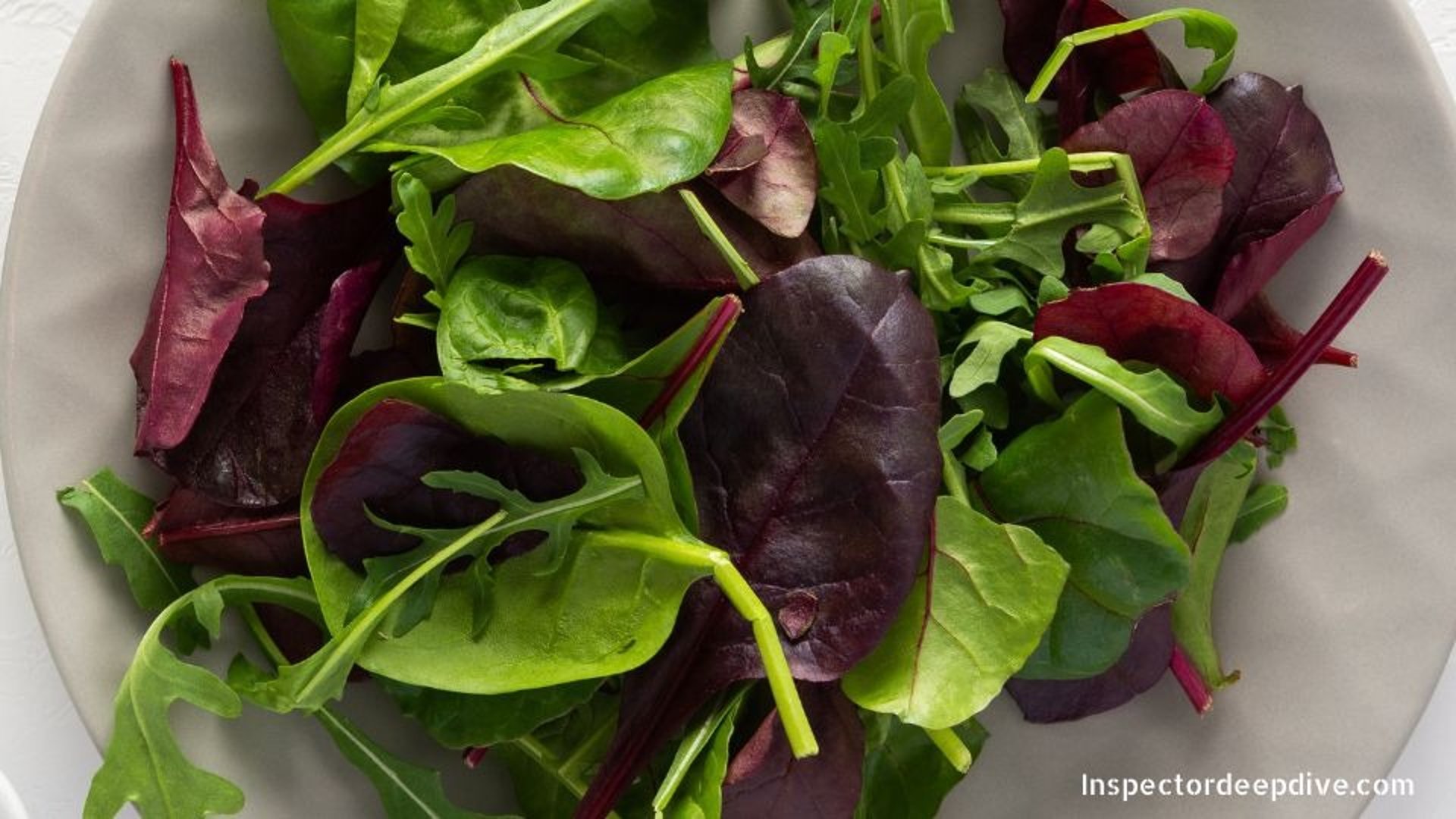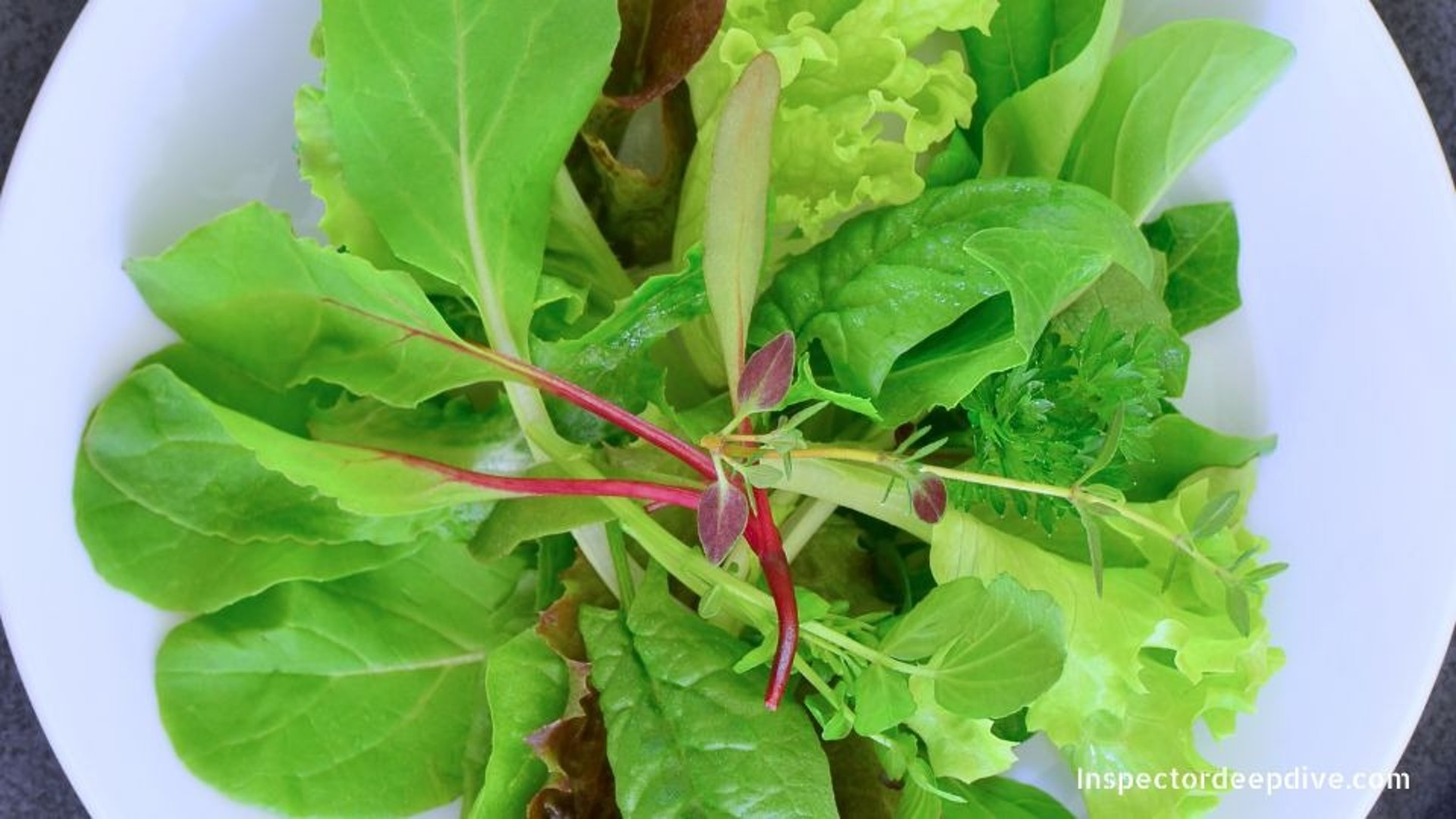
Mesclun: Nutritional Facts and Health Benefits

Mesclun: Nutritional Facts and Health Benefits
What is mesclun?
Mesclun (also called mesclun mix, spring mix, or salad mix) is a blend of young, tender salad greens harvested early in their growth. It combines several lettuces, herbs and leafy vegetables to offer a variety of flavors, textures and colors.
Origin and availability
Mesclun originated in Provence, France, as a mix of wild greens and cultivated lettuces. Today it’s grown worldwide and is widely available in grocery stores and farmers’ markets. It thrives in cool weather (spring and fall) and is available year‑round in many regions thanks to greenhouse production, though peak flavor occurs during cooler months.
Common varieties in a mix
Mild greens: butterhead lettuce, romaine, baby spinach
Peppery greens: arugula, mizuna
Bitter greens: radicchio, frisée, chicory
Benefits
Mesclun is nutrient-dense and hydrating. Key benefits:
Provides vitamins A, C and K that support vision, immunity, collagen production and bone health.
Supplies antioxidants and phytochemicals that reduce inflammation and protect cells.
Offers fiber to support digestion and satiety.
Low in calories ideal for light, nutrient-rich meals.
Nutritional breakdown (per 100 g raw, approx).
Vitamins
Vitamin A: 2000 IU supports eye health, cell growth, and immune function [1].
Vitamin C: 15 mg aids immune function and collagen production; acts as an antioxidant.
Vitamin K: 100 µg essential for blood clotting and bone metabolism.
Folate: 50 µg important for cell division and critical during pregnancy.
Minerals
Potassium: 300 mg helps regulate fluid balance and supports heart and muscle function.
Calcium: 80 mg contributes to bone and teeth strength.
Iron: 1.2 mg needed for oxygen transport in the blood.
Magnesium: 20 mg involved in energy production and muscle and nerve function.
Macronutrients
Water: 92 g high water content supports hydration and adds low-calorie volume to meals.
Energy: 20 kcal very low in calories, useful for calorie-conscious eating.
Protein: 1.5 g provides small amounts of amino acids for cell maintenance and repair.
Total fat: 0.3 g minimal fat, mostly unsaturated.
Carbohydrates: 4 g includes natural sugars and fiber for gentle energy.
Dietary fiber: 2 g supports digestion and helps you feel full.
Sugars: 1 g naturally occurring simple sugars.
The “anti” factors
Anti-inflammatory: contains phytochemicals and antioxidants that help reduce inflammation.
Antioxidant: neutralizes free radicals and protects cells from oxidative damage.
Anti-cancer (potential): diets high in leafy greens are associated with lower risk of some cancers; antioxidants and phytochemicals contribute to this effect.
Risks and medication interactions
Bitterness: some greens (arugula, chicory) can be bitter; pairing with milder or sweeter ingredients eases flavor.
Medication interaction: the high vitamin K content can affect blood-thinning medications (e.g., warfarin). If you take anticoagulants, consult your clinician about consistent vitamin K intake and monitoring.
How mesclun affects your body
Mesclun supplies hydration, vitamins, minerals and antioxidants that support immune function, vision and bone health. Its fiber helps digestion and promotes satiety while providing very few calories.
Who should be cautious?
People on blood-thinning medication should monitor vitamin K intake and consult healthcare providers.
Those sensitive to bitter flavors may want to combine mesclun with sweet, tangy or creamy ingredients to balance taste.
Environmental impact
Mesclun grows quickly and often requires less water than some crops, but its short shelf life can increase food waste. Choosing locally grown mesclun reduces food miles and usually offers fresher produce.
Storage and shelf life
Store mesclun in the refrigerator in a plastic bag or airtight container lined with paper towels to absorb excess moisture. Properly stored, it can last up to about one week; use promptly for best texture and flavor.
Label‑reading tips
Look for fresh, vibrant leaves without yellowing, wilting or sliminess. Organic labels indicate reduced pesticide use and may be preferred by those concerned about chemical residues.
Culinary tips
Wash and thoroughly dry mesclun before use.
Balance flavors by pairing peppery or bitter greens with sweet fruit, tangy dressings or creamy cheeses/avocado.
Use raw in salads, sandwiches and wraps, or briefly wilt at the end of cooking for warm dishes.
Easy recipe ideas
Mesclun salad with strawberries, goat cheese and balsamic glaze
Grilled chicken and mesclun wrap with avocado spread
Warm quinoa and mesclun bowl with lemon dressing
Mesclun smoothie with banana and pineapple (use milder greens)
Quick sauté: mesclun tossed briefly with garlic and olive oil
2025 latest scientific information on mesclun
Leafy greens in mesclun contain carotenoids, flavonoids and other polyphenols that support antioxidant defenses and anti-inflammatory pathways. Regular consumption of leafy greens is linked in studies with lower risks of cardiovascular disease and certain chronic conditions [1]. Mesclun lettuce is a good source of vitamin A, which supports eye health and immune function, and contains dietary fiber, which aids digestion and supports heart health [2].
Surprising truths
Mesclun is a blend not a single plant so its nutritional profile varies with the mix.
Mixing a variety of greens provides a broader range of nutrients in one serving.
Frequently asked questions
Is mesclun healthy?
Yes it is low in calories and rich in vitamins, minerals, fiber and antioxidants.
Can you eat mesclun raw?
Yes mesclun is commonly eaten raw in salads, wraps and sandwiches.
How do I keep mesclun fresh?
Refrigerate in a bag or container lined with paper towels; use within about a week.
info@inspectordeepdive.com
© 2025 food.InspectorDeepDive.com. All rights reserved. Content may not be copied or republished without permission.
This article is for informational purposes only. InspectorDeepDive.com does not provide medical advice. Always consult a licensed healthcare provider before making dietary or health decisions.
